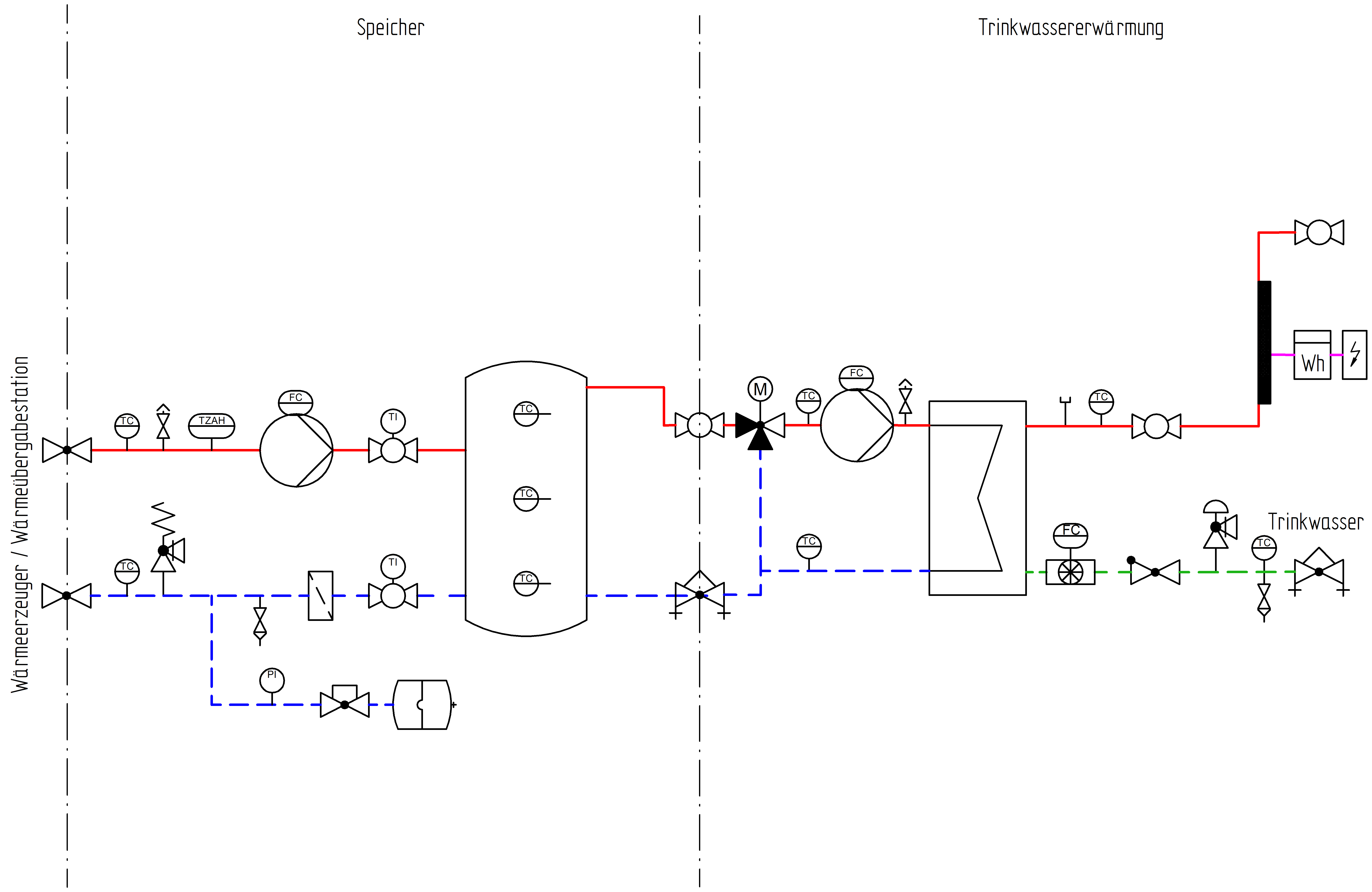Project “TWE-Flex”
N5GEH-TWE-Flex – Use Case Description
Within the scope of the N5GEH-TWE-Flex project, the domestic hot water preparation in systems of centralized and decentralized heat supply is the focus of the considerations. For decentralized systems with heat pumps, high temperatures represent a certain hurdle, as this significantly reduces the COP value. For central heat distribution systems (district and local heating systems), there is a tendency toward low system temperatures in order to keep heat losses as low as possible. Worth mentioning here are 4th and 5th generation heat networks. For both types of system (centralized / decentralized), however, it must be taken into account that the hygienic quality of the drinking water must not be impaired if the media temperatures are lowered. This means that legionella growth must be avoided at all costs.
The system to be developed in the N5GEH-TWE-Flex project is intended to create a detection system for monitoring the temperature of the drinking water on the basis of temperature holding bands, which are characterized by a temperature-dependent power consumption. This temperature monitoring system is to enable a reduction of the system temperatures at the heat generator or in the central local and district heating network. Furthermore, it is planned to optimize the operating times of the central hot water generation by detecting tap profiles. In a second step of the study, a fluid liner system will be additionally analyzed and its effect on the growth of Legionella will be described in detail. The R&I scheme documented in the following figure is used as the system architecture.

The detection of the different operating states will be performed using the N5GEH’s cloud infrastructure, with various interfaces to the partners’ IOT infrastructure being developed.